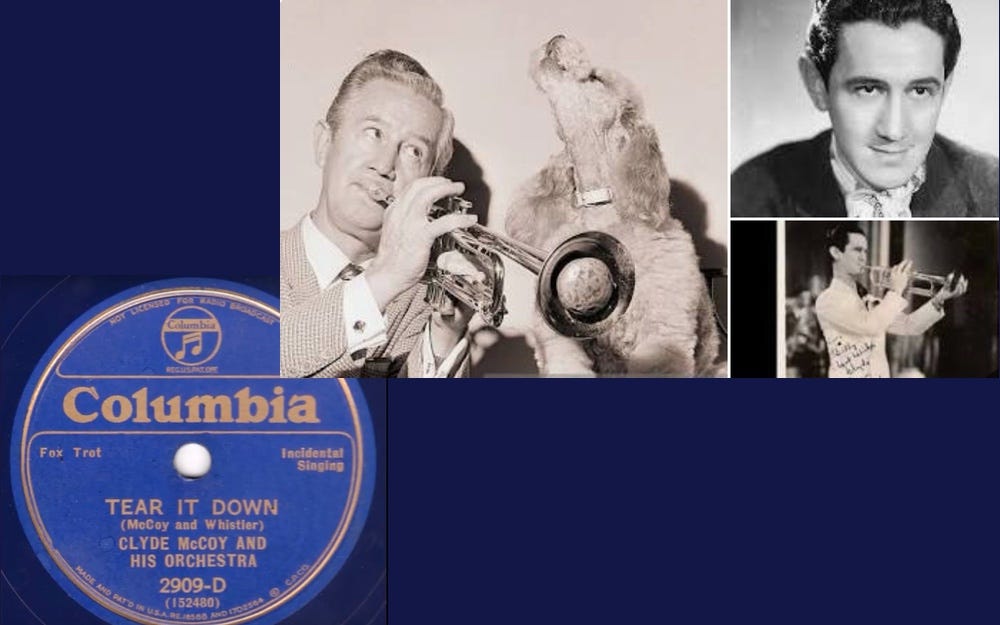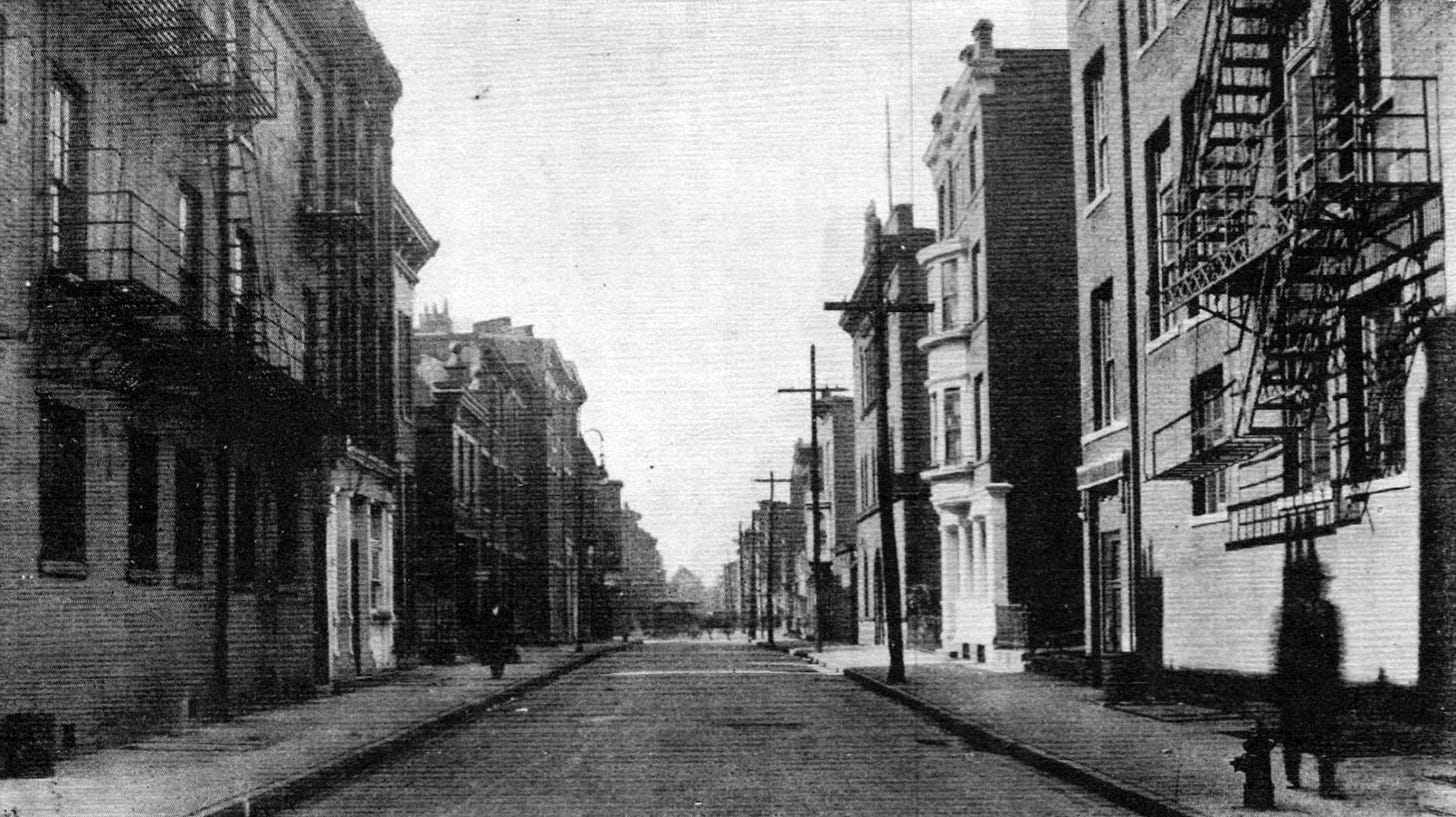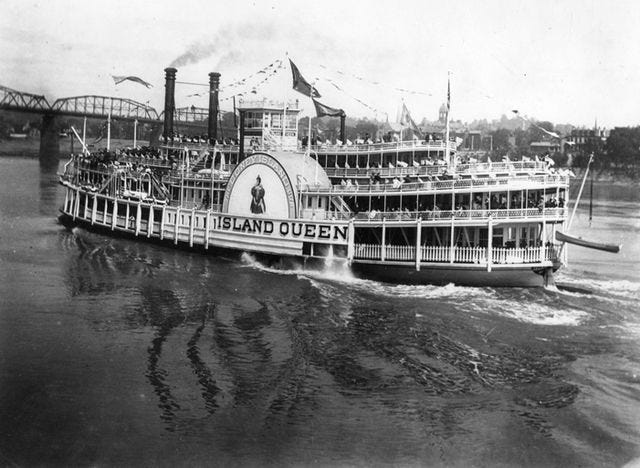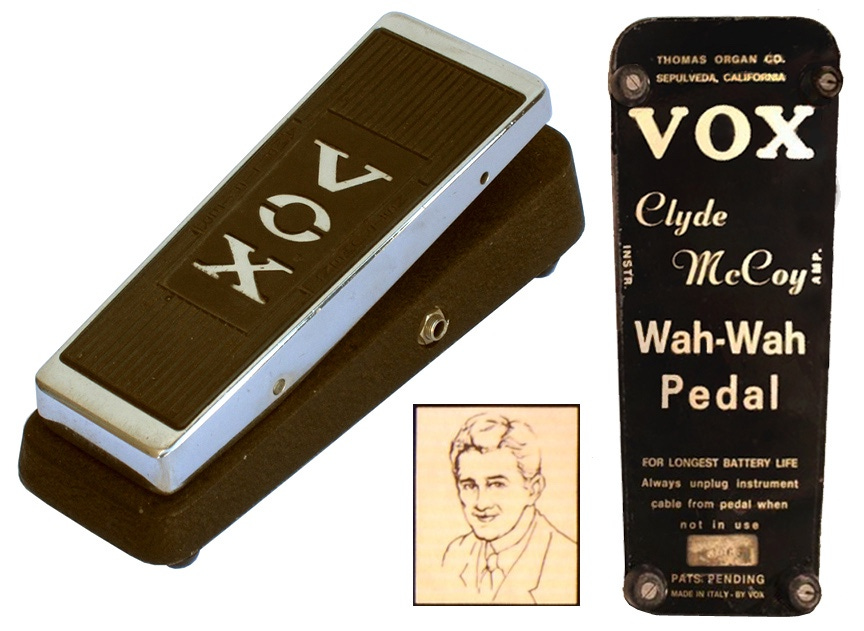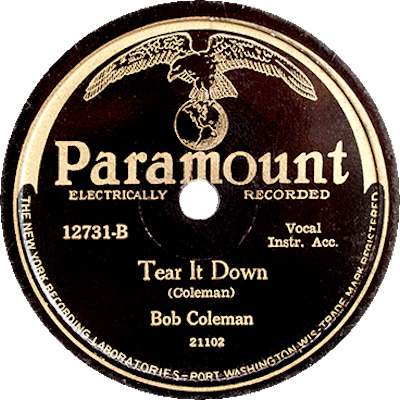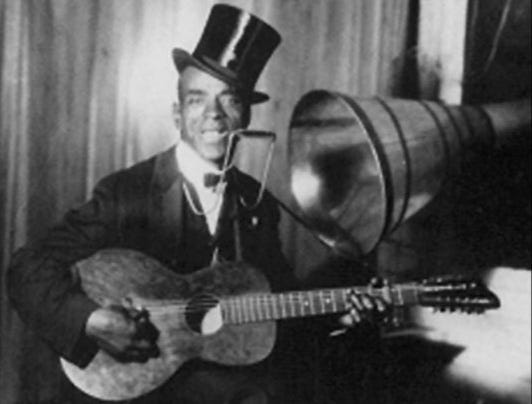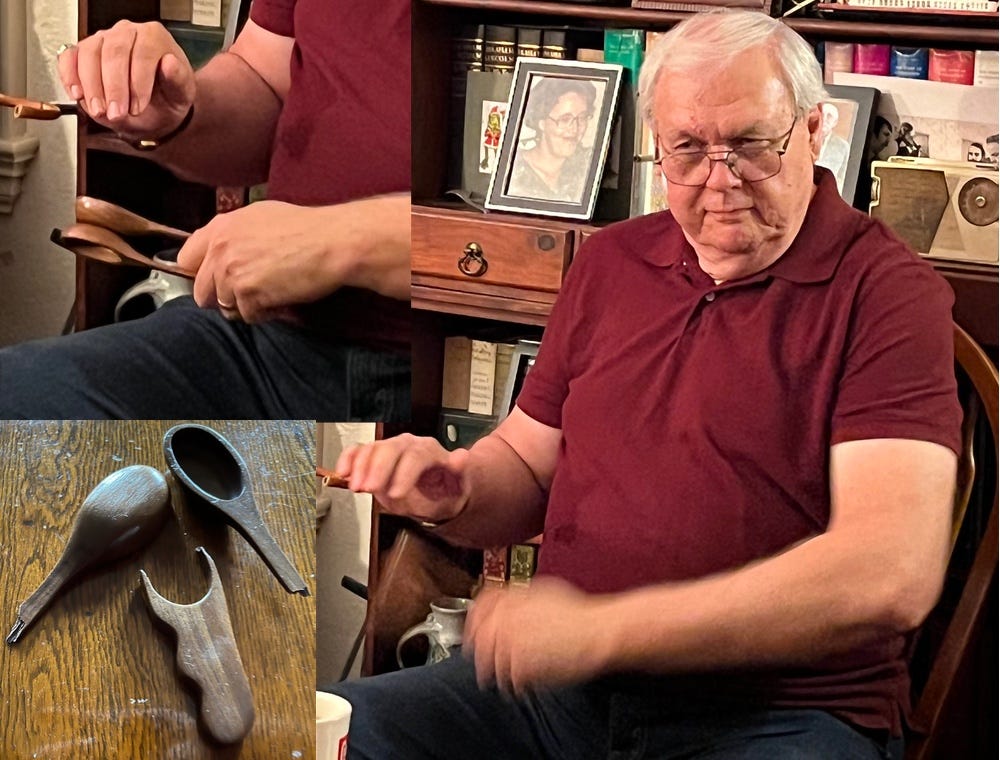Ashland, Ky., native Clyde McCoy and his orchestra recorded this song for Columbia in 1933 and then for the next half century he continued to perform it in front of crowds all over the country.
In fact, “Tear It Down” was one the trumpeter’s two most requested numbers, second only to his signature song, Clarence Williams’ “Sugar Blues.”
When Clyde moved from Columbia to the new Decca label in 1935, he re-recorded “Tear It Down” as the A side of his band’s first release for that company. While millions of copies of the record sold over the years, few listeners ever knew that Clyde’s happy, silly swing number was rooted in a dark and desperate neighborhood downriver in Cincinnati. We’ll tell that story in a minute.
The Clyde McCoy Story
Rivers were a big part of Clyde McCoy’s life. When he was 9, he moved with his family from Ashland to Portsmouth, Ohio.
There, when he was just 14, Clyde found jobs playing on the riverboats, which in those days still worked the waters of the rural Midwest, southern and border states. He performed on the sidewheelers Island Queen and Bernard McSwain.
One of the youngest musicians on the river, he already was a stand-out trumpet player.
In 1920 McCoy assembled his first band for a two-week engagement at a popular Knoxville, TN, resort. It was quite a trick; though the guys had never performed together, they proved quite popular and their contract was extended to two months.
Then for the next decade, the band mates worked from New York to Los Angeles, honing their chops. It was during this period that McCoy also started using a mute on his trumpet, creating the "wah-wah" effect that became his signature sound, a distinctive musical identification.
Lightning finally struck when Clyde and the boys landed at Chicago’s plush Drake Hotel. When they played their rendition of "Sugar Blues," the crowd went wild. The song hit the radio. A Columbia Records recording contract followed, and the band was on its way. That first record — with “Sugar Blues” on one side and “Tear It Down” on the other — sold millions of copies by early the next year, no small feat in the depths of the depression.
Its success fueled a remarkable 68-year career for the Kentuckian. At Clyde's retirement in 1985, total international sales of that original recording were more than 14 million. Meanwhile, McCoy's "Wah-Wah Mute" was so popular that he licensed the King Instrument Co. to market the device to trumpeters around the world.
The Wah-Wah Pedal
Clyde’s wah-wah-ishness even traveled beyond the trumpet world to guitarists. In 1967, the Vox Clyde McCoy Wah-Wah Pedal, a significant guitar effect of its time, was invented by engineer Brad Plunkett of the Thomas Organ Co.
Original versions featured an image of McCoy on the bottom panel. This branding later gave way to just his signature before the name of the pedal was changed to “Cry Baby.”
But What About the Song?
So, Clyde and his orchestra recorded “Tear It Down” in 1933, but the song seems to have originated at least four years earlier downriver from McCoy’s old Portsmouth, Ohio, home.
Now our story needs to jump to the red light district of Cincinnati where a pair of young brothers named Bob and Walter Coleman were fixtures in the dives on George Street.
With Bob on guitar and Walter on harmonica, the two often teamed up with a Paducah, Ky., multiple instrumentalist named Sam Jones (often called “Stovepipe #1”).
In May 1928, Bob Coleman, under the name "Kid Cole," traveled with Jones to Chicago to record four sides for Vocalion Records. When he returned to Chicago in January 1929, Coleman brought with him both Jones and his brother, Walter, to record four more sides for Paramount, two credited to “The Cincinnati Jug Band” and the remainder to Bob Coleman alone.
It was in that session that Coleman recorded what seems to have been his own composition, “Tear It Down.” That side — along with the group’s "Newport Blues," "George Street Stomp" and "Cincinnati Underworld"— are among the rarest of all jug band recordings and these days remain prized among collectors.
Following Coleman’s 1929 release, “Tear It Down” became one of the favorite tunes for jug bands. Jack Kelly and the Memphis Jug Band did it in 1930, as did Whistler’s Jug Band (though they called it “Foldin’ Bed”).
Meanwhile, Sam Jones moved to Atlanta, taking the tune with him. When he teamed with guitarist David Crockett, he recorded it for Okeh Records as King David’s Jug Band.
And today the song still has game. Back in January 2001, for instance, when the guys of Old Crow Medicine Show made their four-minute debut on the Grand Ole Opry at the Ryman Auditorium, they played "Tear It Down" and received a rare first-time-out standing ovation and a call for an encore.
Our Take on the Tune
Jack Nuckols, an old high school buddy of Charlie Bowen’s, has played lots of instruments — fiddle, guitar, dulcimer, Autoharp — and as a percussionist he used to jam with The Flood back in the Bowen Bash days.
Last week when Jack dropped in to visit with the band, we immediately drew him into the circle. First, we passed him the house bongos to play, but then when a jug band tune came around, we put spoons in his hands.
Jack was rocking it hard, we were digging on those rhythmic riffs and, just as we were fixing to turn it over to him for a solo, darned if those spoons didn’t break in his hands. Now, Jack was apologetic, but — as you’ll hear — we all thought it was a hoot! What better way to end a song called, “Tear It Down”?




